
Top Optimistic Rollups & L2 Ecosystems (2025)

Who this guide is for. Builders, power users, and teams choosing where to deploy or transact on Ethereum-style optimistic rollups and OP Stack L2s in 2025.
Top three picks.
- Arbitrum One — broadest DeFi depth and mature fraud proofs.
- OP Mainnet (Optimism) — feature-complete fault proofs, the Superchain standard.
- Base — OP Stack at scale with strong developer docs and low, predictable fees. (docs.arbitrum.io)
One key caveat. Withdrawals to L1 use a challenge period (~7 days) on optimistic rollups; fast bridges can bypass with extra trust/cost. (docs.arbitrum.io)
Introduction: Why Optimistic Rollups & L2 Ecosystems Matter in November 2025
Optimistic rollups are L2 networks that post transaction data to Ethereum and assume validity unless challenged via fraud (fault) proofs, enabling cheaper, faster transactions while inheriting Ethereum’s security. They matter now because OP Stack chains have standardized tooling, bridges, and proofs, and multiple ecosystems (Arbitrum, Optimism, Base, Mode, World Chain, Fraxtal, Zora, opBNB, Blast, Metis) have reached scale. Primary keyword: Top Optimistic Rollups. (docs.arbitrum.io)
How We Picked (Methodology & Scoring)
We shortlisted ~20 credible L2s, then scored and selected TOP_N = 10 using official docs for architecture, fees, bridges, and proof status. Third-party datasets were used only for cross-checks.
Scoring Weights (sum = 100):
- Liquidity — 30%
- Security (proofs, upgrade path, disclosures) — 25%
- Coverage (ecosystem depth, tooling) — 15%
- Costs (fees, DA approach) — 15%
- UX (bridging, docs) — 10%
- Support — 5%
Freshness: Last updated November 2025. (docs.optimism.io)
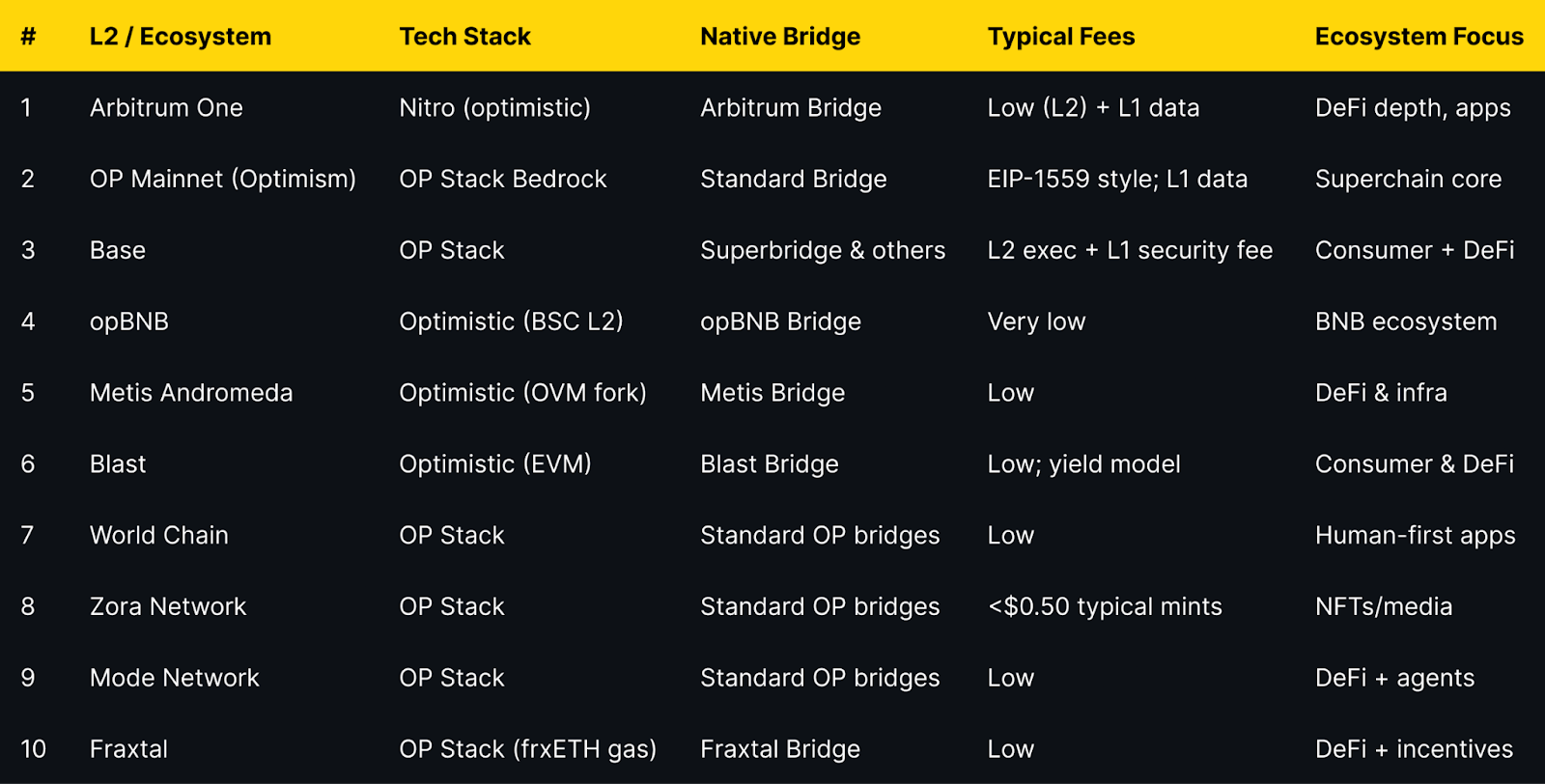
Notes: “Typical fees” reflect L2 execution + L1 data costs; withdraws to L1 follow a challenge window on optimistic designs. (docs.arbitrum.io)
Top 10 Optimistic Rollups & L2 Ecosystems in November 2025
1. Arbitrum One — Best for deep DeFi liquidity
Why Use It. Arbitrum’s Nitro stack delivers mature optimistic security with interactive fraud proofs and broad app coverage. Official docs emphasize the one-week challenge window for L1 withdrawals and support for fast-withdrawal patterns. (docs.arbitrum.io)
Best For. DeFi protocols, power users, market makers.
Notable Features. Fraud-proof system; Nitro throughput; ecosystem depth; L2→L1 fast-withdraw patterns. (docs.arbitrum.io)
Fees Notes. L2 gas + L1 data costs.
Regions. Global (availability depends on wallet/exchange access).
Alternatives. OP Mainnet, Base.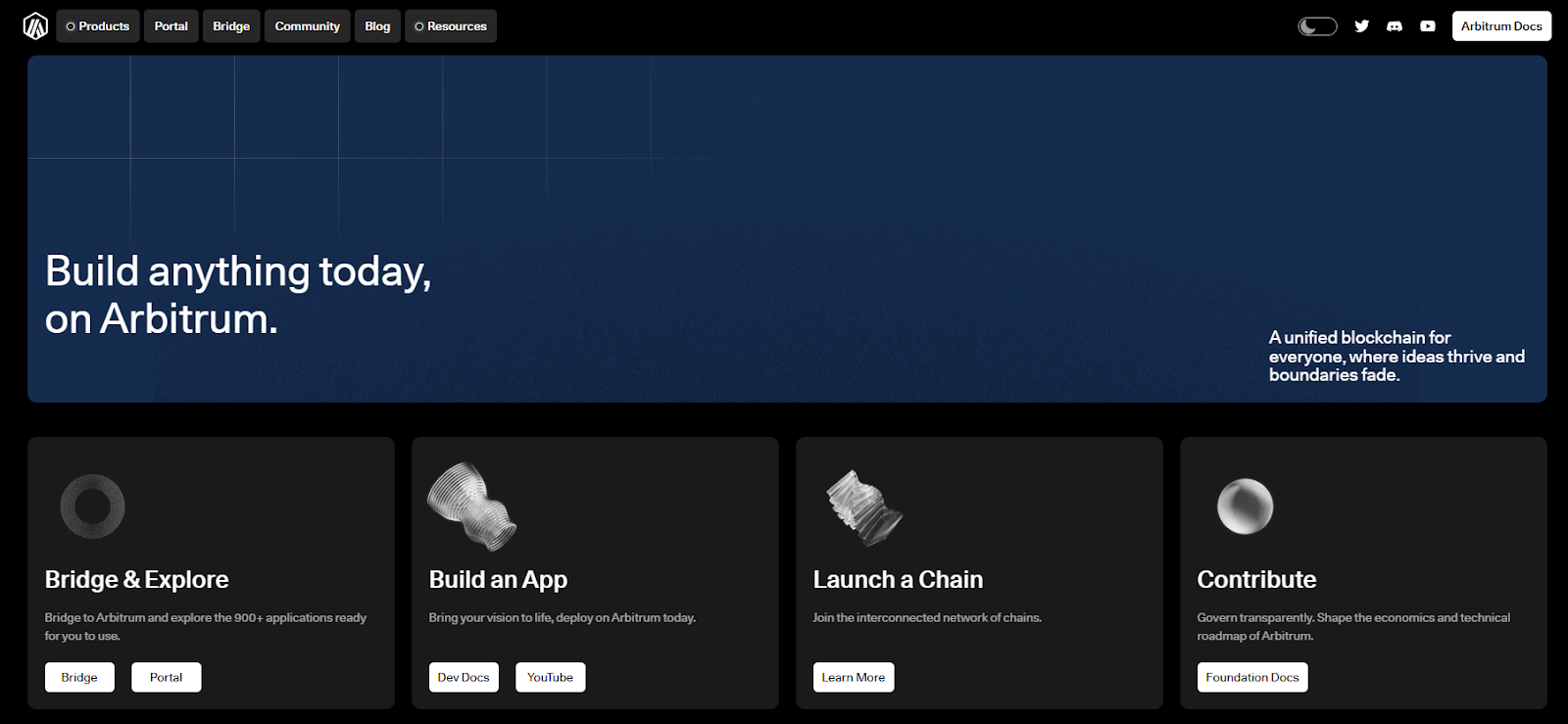
2. OP Mainnet (Optimism) — Best for Superchain standardization
Why Use It. The OP Stack introduced feature-complete fault proofs on June 10, 2024, enabling permissionless challenge of proposed outputs. Fees follow EIP-1559-style mechanics, with Ecotone updates relaying blob base fees. (docs.optimism.io)
Best For. Teams planning multichain OP Stack deployments; public goods alignment.
Notable Features. Standard Bridge; strong docs; Superchain governance. (docs.optimism.io)
Fees Notes. Execution gas as on L1 plus L1 data; EIP-1559 style. (docs.optimism.io)
Regions. Global.
Alternatives. Base, Mode.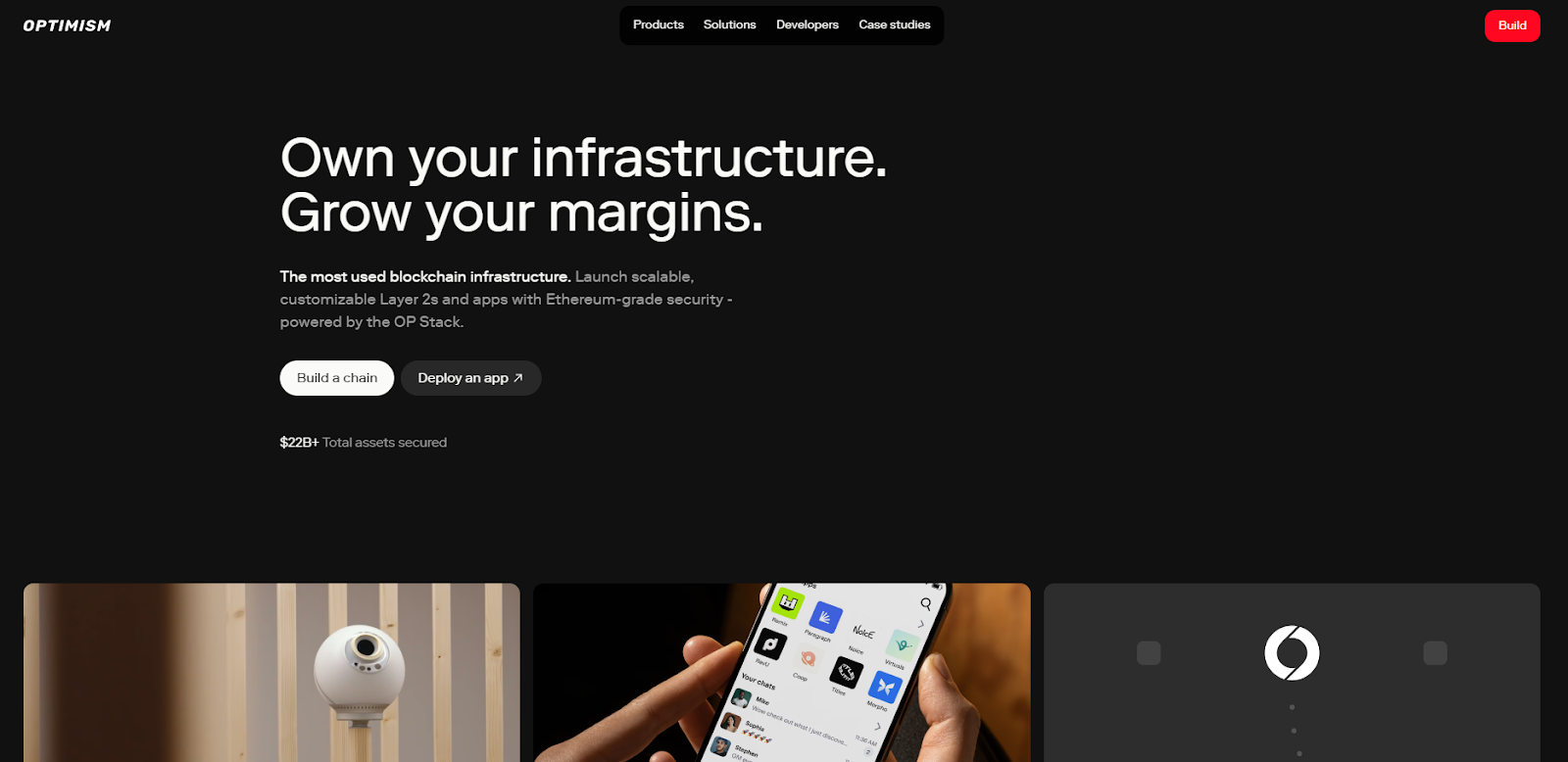
3. Base — Best for builder UX at scale
Why Use It. Base provides clear fee breakdowns (L2 execution + L1 security fee) and robust docs for bridging and development; widely adopted across consumer and DeFi apps. (docs.base.org)
Best For. Consumer apps, gaming, creators, DeFi teams.
Notable Features. OP Stack chain; programmatic bridging examples; security council documentation. (docs.base.org)
Fees Notes. Two-component fee model (L2 + L1). (docs.base.org)
Regions. Global.
Alternatives. OP Mainnet, Arbitrum.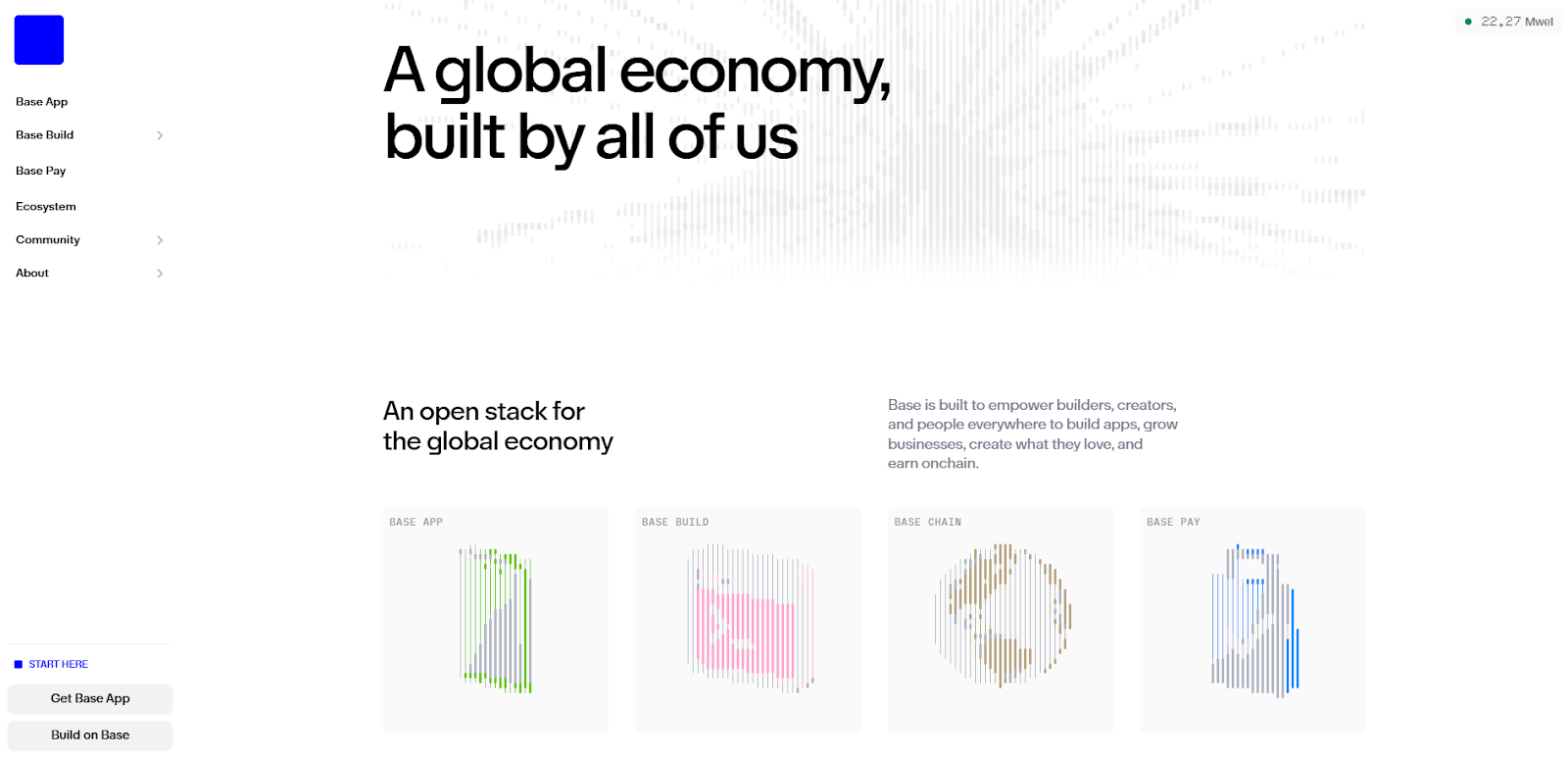
4. opBNB (BNB Chain) — Best for BNB ecosystem cost sensitivity
Why Use It. opBNB uses an optimistic rollup to scale BNB Smart Chain with very low fees and high throughput for EVM apps. Docs include explicit L1 data fee formulas. (docs.bnbchain.org)
Best For. Cost-sensitive deployments, BNB ecosystem projects.
Notable Features. OP-style architecture; low-fee environment; BNB chain integrations. (docs.bnbchain.org)
Fees Notes. Very low L2 gas; DA fee formula documented. (docs.bnbchain.org)
Regions. Global.
Alternatives. Base, Mode.
5. Metis Andromeda — Best for sequencer decentralization roadmap
Why Use It. Metis is an optimistic rollup emphasizing a decentralized sequencer pool and performance improvements through its Andromeda roadmap. (metis.io)
Best For. Teams valuing sequencer-level resiliency; DeFi infra.
Notable Features. OVM-lineage EVM equivalence; decentralizing sequencer; ecosystem grants. (L2BEAT)
Fees Notes. Low L2 gas; standard optimistic withdrawal window.
Regions. Global.
Alternatives. Arbitrum, OP Mainnet.
6. Blast — Best for native yield design
Why Use It. Blast is an EVM-compatible optimistic rollup with native yield for ETH and stables at the protocol level, while inheriting Ethereum security. (docs.blast.io)
Best For. Consumer apps and DeFi seeking built-in yield flows.
Notable Features. Yield on bridged assets; OP-style architecture; EVM tooling. (L2BEAT)
Fees Notes. Low L2 gas; standard optimistic withdrawal semantics.
Regions. Global.
Alternatives. Base, Mode.
7. World Chain — Best for human-centric apps
Why Use It. Built on the OP Stack, World Chain prioritizes verified human users with gas allowances and personhood-aware UX, suitable for consumer on-ramps and identity-heavy apps. (docs.world.org)
Best For. Identity-centric consumer apps, payments.
Notable Features. OP Stack standardization; personhood primitives; Superchain membership. (L2BEAT)
Fees Notes. Low L2 gas; standard OP Stack bridging/withdrawals.
Regions. Global.
Alternatives. Base, OP Mainnet.
8. Zora Network — Best for creators & NFTs
Why Use It. Zora is an OP Stack L2 focused on media/NFTs, with docs citing typical NFT mint costs under $0.50 and clear OP Stack security inheritance. (zora.energy)
Best For. NFT marketplaces, media apps, creator tools.
Notable Features. Flat mint fees for collectors; OP Stack tooling; creator-first ecosystem. (docs.growthepie.xyz)
Fees Notes. Low, NFT-friendly fees; network fees apply. (zora.energy)
Regions. Global.
Alternatives. Base, Blast.
9. Mode Network — Best for DeFi + agentic apps
Why Use It. Mode is an OP Stack L2 positioned as a DeFi and agent economy hub, aligning to the Superchain and contributing sequencer fees to OP Collective. (docs.mode.network)
Best For. DeFi protocols, AI/agentic apps.
Notable Features. OP Stack mainnet configuration; Superchain integrations; incentives. (docs.mode.network)
Fees Notes. Low L2 gas; standard OP Stack bridging/withdrawals.
Regions. Global.
Alternatives. OP Mainnet, Base.
10. Fraxtal — Best for DeFi incentives & frxETH gas
Why Use It. Fraxtal is an OP Stack L2 with frxETH as gas and modular DA; official docs cover bridge support and OP Stack compatibility. (docs.frax.finance)
Best For. DeFi protocols leveraging blockspace incentives and ETH-centric gas.
Notable Features. OP Stack; frxETH gas; Flox incentives; native bridge. (Frax)
Fees Notes. Low L2 gas; standard OP Stack withdrawal semantics.
Regions. Global.
Alternatives. Mode, OP Mainnet.
Decision Guide: Best By Use Case
- Regulated U.S. footprint + builder UX: Base, OP Mainnet. (docs.base.org)
- Deep DeFi + liquidity: Arbitrum One, Base. (docs.arbitrum.io)
- Ultra-low fees / BNB ecosystem: opBNB. (docs.bnbchain.org)
- Sequencer decentralization focus: Metis Andromeda. (metis.io)
- Creators / NFTs: Zora Network. (zora.energy)
- Built-in yield: Blast. (docs.blast.io)
- Identity & human-centric UX: World Chain. (docs.world.org)
- Agentic DeFi / incentives: Mode, Fraxtal. (docs.mode.network)
How to Choose the Right Optimistic Rollup (Checklist)
- Region eligibility for your users and app store distribution.
- Fraud/fault proofs live and documented; withdrawal challenge period understood. (docs.optimism.io)
- Data availability costs and L1 data fee exposure. (docs.optimism.io)
- Bridge UX: native vs third-party, fast-withdraw options. (docs.optimism.io)
- Sequencer model and roadmap to decentralization. (metis.io)
- Fees transparency (L2 execution + L1 security fee). (docs.base.org)
- Official docs, status, and upgrade cadence. (docs.optimism.io)
- Ecosystem fit (DeFi, NFTs, consumer, identity).
- Support channels, incident response, and disclosures.
- Red flags: unclear proofs, opaque bridges, or abandoned docs.
Use Token Metrics With Any Optimistic Rollup
- AI Ratings to screen assets by quality and momentum.

- Narrative Detection to spot early theme shifts across ecosystems.
- Portfolio Optimization to balance risk across L1/L2 exposure.
- Alerts & Signals to time entries/exits as fees and activity shift.
Start free trial to screen assets and time entries with AI.
Security & Compliance Tips
- Prefer official standard bridges when possible; understand trust trade-offs of fast bridges. (docs.optimism.io)
- Expect a ~7-day withdrawal window on optimistic rollups; plan treasury ops accordingly. (docs.arbitrum.io)
- Verify contract addresses on official explorers/docs before bridging. (docs.base.org)
- Monitor L1 data fee swings during high Ethereum congestion. (docs.optimism.io)
- Review sequencer centralization and posted upgrade paths. (metis.io)
- Keep seed/MPC practices high-hygiene; use hardware where possible.
- {This article is for research/education, not financial advice.}
Beginner Mistakes to Avoid
- Ignoring the challenge window and expecting instant L1 finality. (docs.arbitrum.io)
- Bridging via unofficial URLs; always verify official docs. (docs.base.org)
- Underestimating L1 data fees during network spikes. (docs.optimism.io)
- Choosing an L2 without considering ecosystem fit (DeFi vs NFTs vs identity).
- Deploying without reading security/proofs and upgrade notes. (docs.optimism.io)
- Skipping incident/status pages and disclosures.
How We Picked (Methodology & Scoring)
- Liqudity (30%) — adoption and app depth.
- Security (25%) — proofs live, challenge periods, sequencer posture.
- Coverage (15%) — ecosystem tooling, bridges.
- Costs (15%) — fee transparency and DA approach.
- UX (10%) — docs, onboarding, explorers, tooling.
- Support (5%) — responsiveness and clarity.
We relied on official provider docs for architecture, fees, and bridges, cross-checking details where prudent. Last updated November 2025. (docs.optimism.io)
FAQs
What is an optimistic rollup?
An L2 that posts transaction data to Ethereum and assumes validity unless challenged via fraud/fault proofs, cutting fees while inheriting L1 security. (docs.arbitrum.io)
How long do withdrawals take?
Native L2→L1 withdrawals on optimistic designs include a challenge window (~7 days); fast bridges can provide liquidity sooner with additional trust/cost. (docs.arbitrum.io)
Why are fees sometimes higher?
Your cost = L2 execution fee + L1 data fee; L1 data fees fluctuate with Ethereum demand and blob/base fee dynamics. (docs.base.org)
Is OP Stack the “standard” for OP-style chains?
Yes, the OP Stack is the public-goods framework for OP-style L2s and Superchain members (e.g., OP Mainnet, Base, Mode, World Chain, Zora, Fraxtal). (docs.optimism.io)
What’s special about opBNB?
It brings optimistic rollup design to the BNB ecosystem with very low fees and BSC alignment. (docs.bnbchain.org)
Which L2 is best for NFTs and creators?
Zora Network is OP Stack-based and optimized for media/NFT mints with sub-$0.50 typical costs. (zora.energy)
Conclusion + Related Reads
If you want DeFi depth, start with Arbitrum or Base. For Superchain standardization and OP-native tooling, OP Mainnet and Mode are strong defaults. Creator projects should consider Zora, identity-centric apps World Chain, and yield-aware consumer apps Blast. For BNB-aligned deployments, opBNB offers ultra-low fees.
Related Reads (Token Metrics):

.svg)

Create Your Free Token Metrics Account

.png)




%201.svg)
%201.svg)


%201.svg)



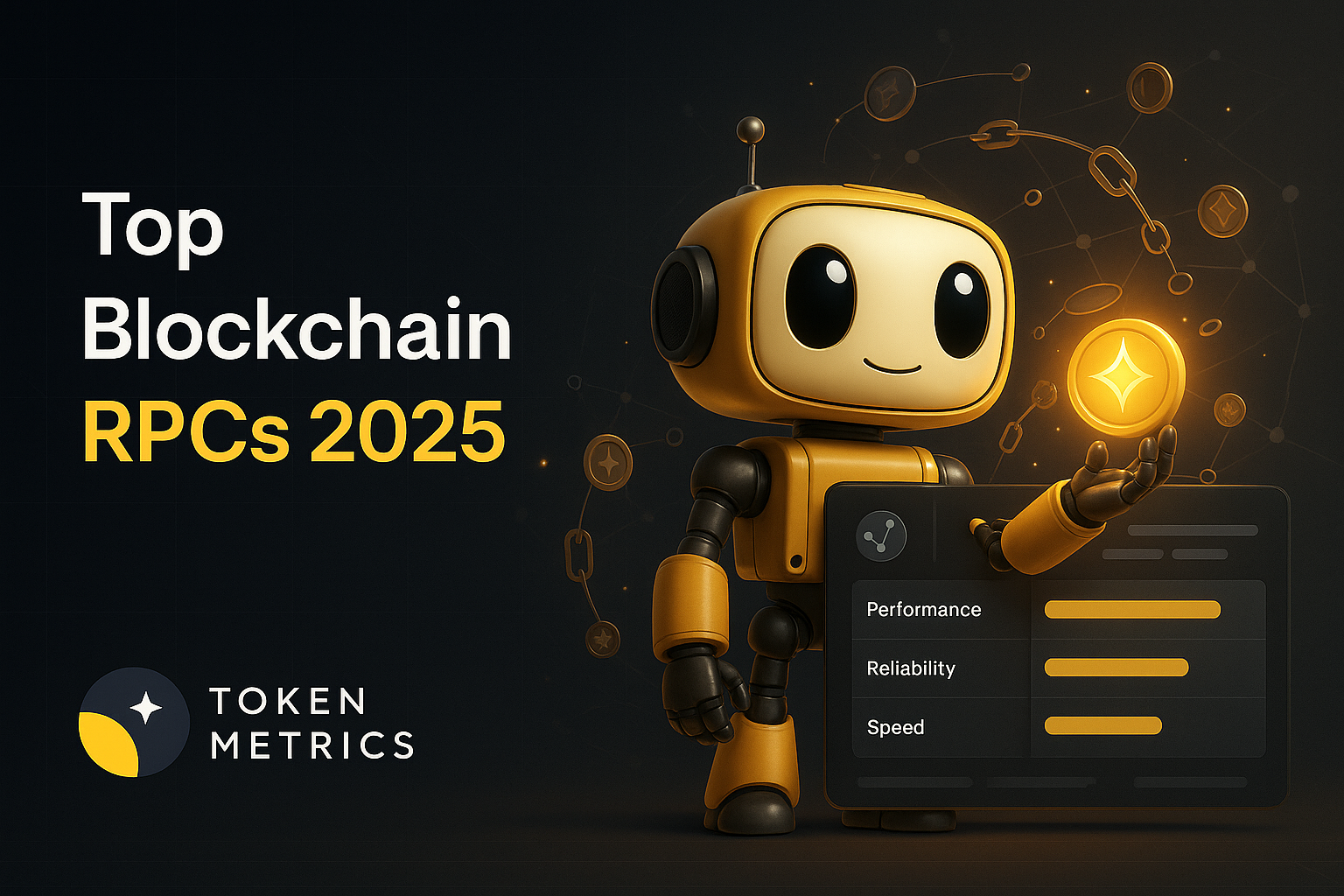
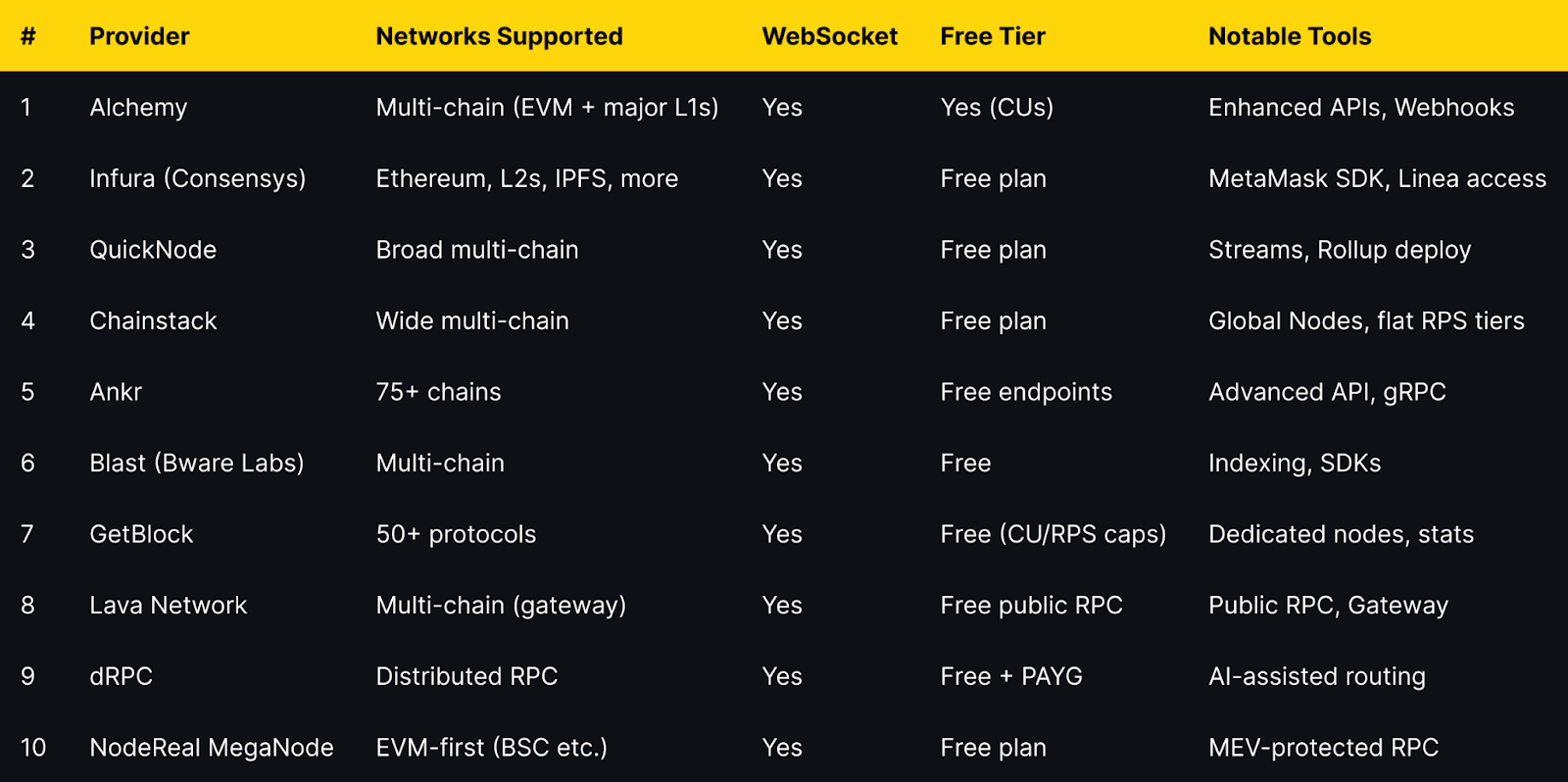

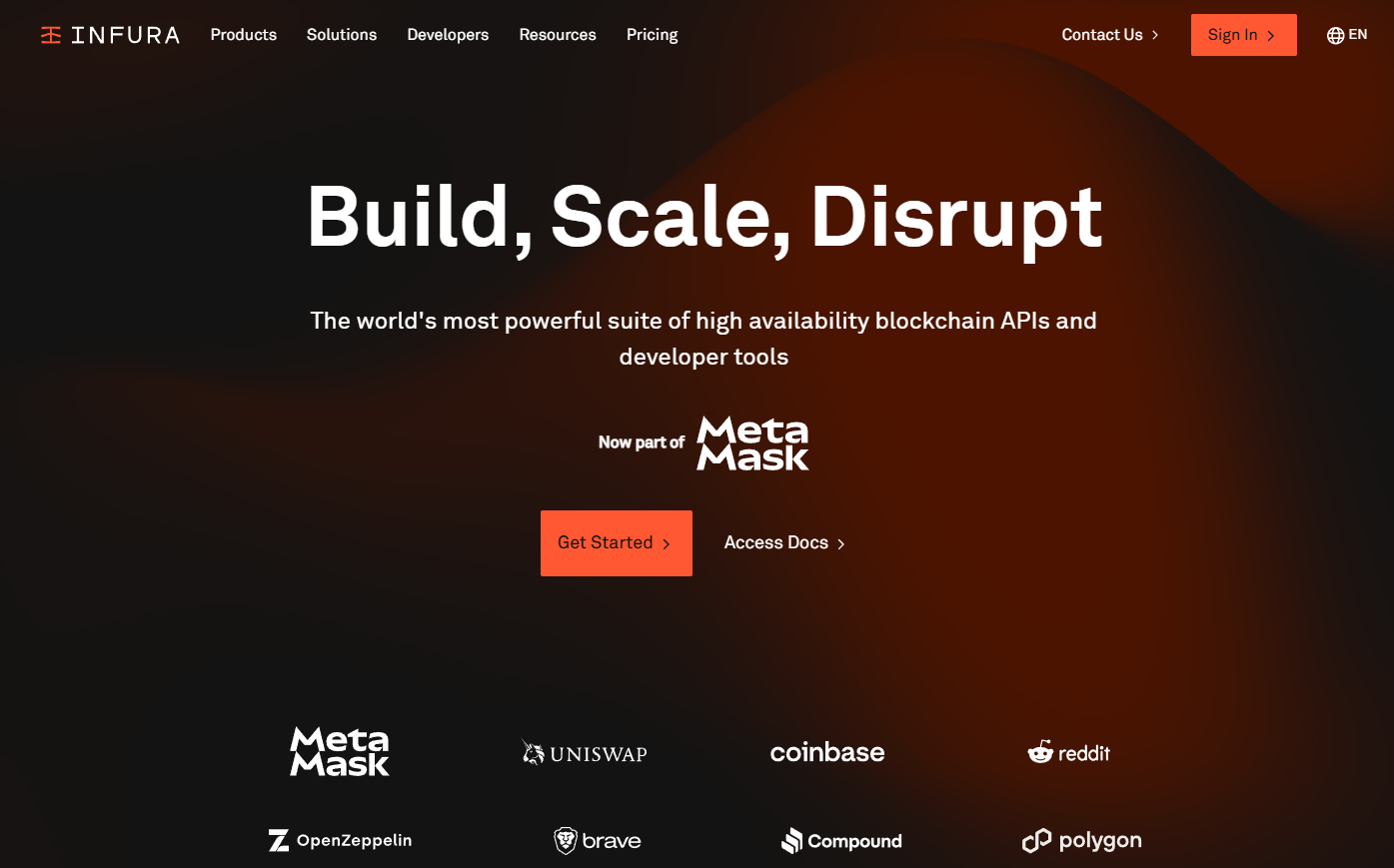
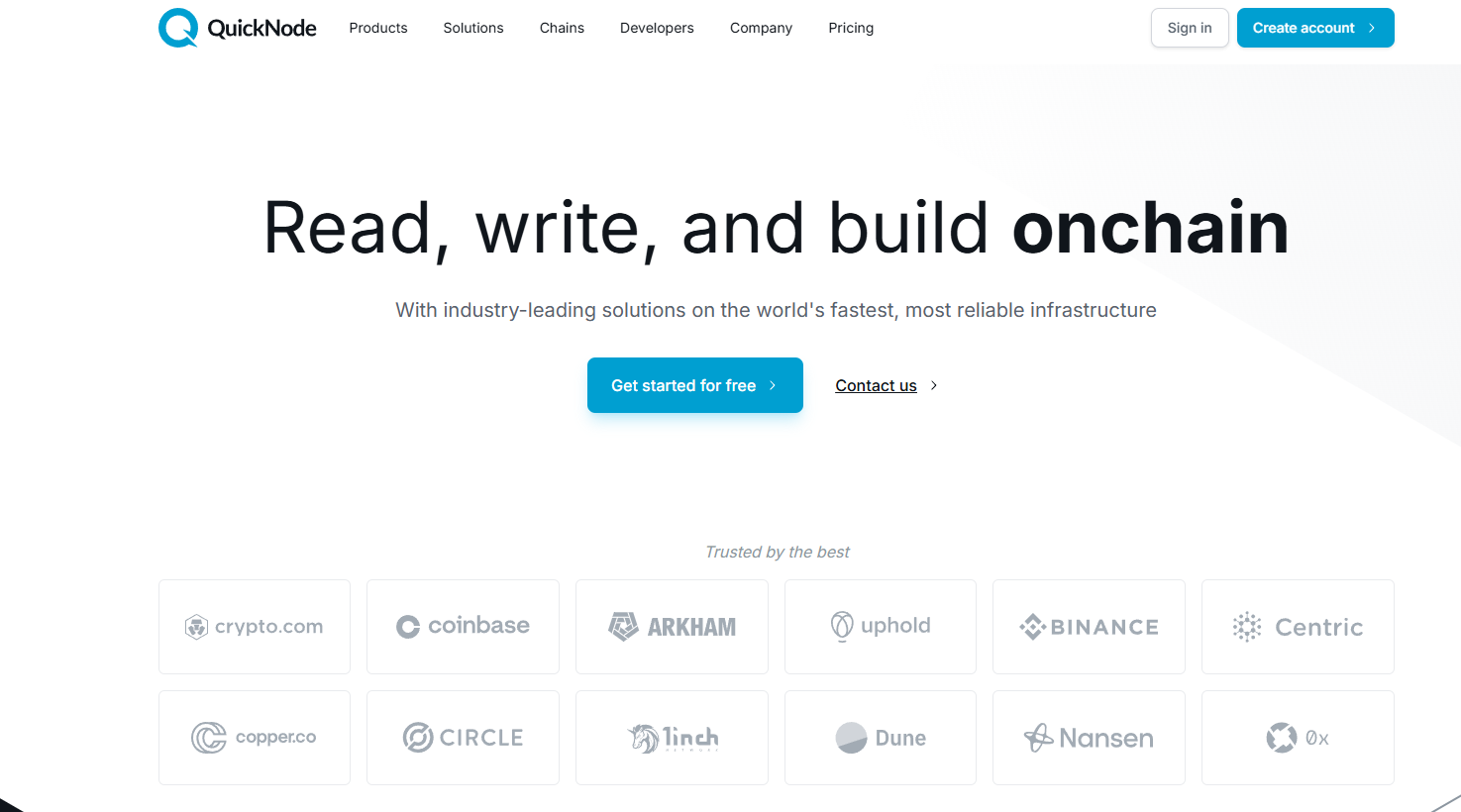














.svg)




.png)